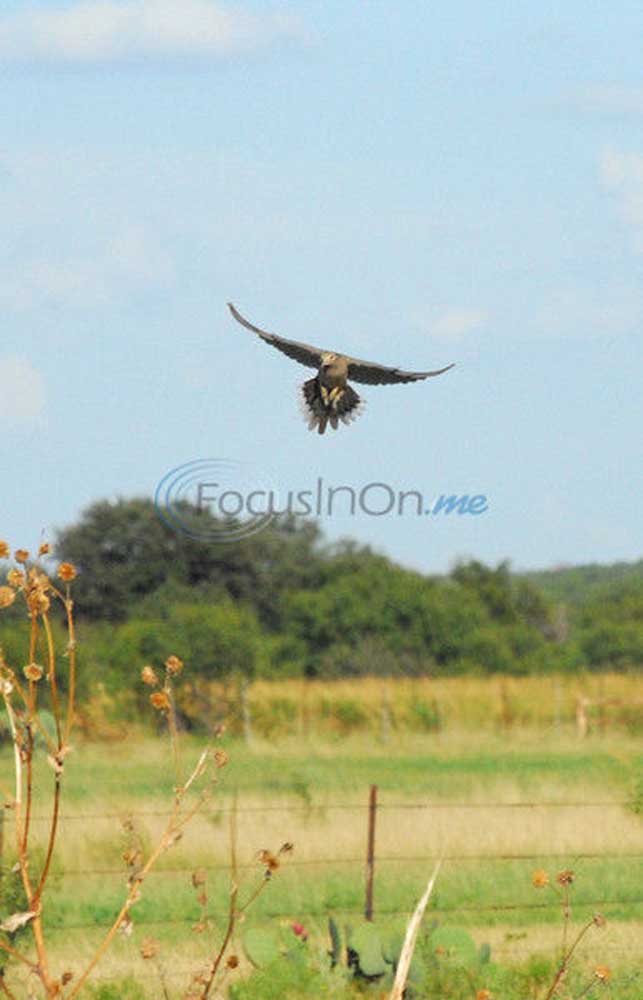TPWD dove lethality study does not offer any surprises
Published 10:24 pm Saturday, December 13, 2014
It has apparently happened. Hell has frozen over.
Why else, after five years since the last of 1,300-plus mourning dove were killed with just over 5,000 shots, would Texas Parks and Wildlife Department et al. finally be delivering its half-million-dollar dove lethality study?
Trending
If it took that long the study must have produced some pretty astounding results, right? Well, you decide. A quick summary of the study is that mourning dove can be killed with either lead or steel shot.
Armed with these results, the department now hopes hunters will have no concerns making the switch when and if it is mandated by the U.S. Fish and Wildlife Service.
Few people probably remember when this research started. It began in 2008 with controlled mourning dove hunts in Central Texas using both lead and steel shot. It became famous the next year when the project ruffled local feathers when shooting started before the regular season opened without anyone who may be holding hunts nearby having been notified.
Actually, that was just half of the study. The other half was to see if lead shot was actually an issue in dove fields in the state. In all the confusion that occurred in 2009, the Parks and Wildlife Commission, which had also not been notified of the study, pulled the plug on the second leg.
TPWD biologists felt there was a need for the whole study because prevailing thoughts indicate a federal mandate for non-toxic shot is coming at some point. What the state wanted to do was make dove hunters feel better about the transition by showing them ahead of time that it works.
When non-toxic or steel was first mandated for waterfowl hunting in 1991 there wasn’t much beyond some shooting at telephone books to show steel shot, the only option at the time, worked.
Trending
Biologists did their homework and collected ducks to show that spent shot was resulting in significant and often toxic lead poisoning in ducks.
No one, however, really bothered to test the option to show hunters steel loads worked. There was a lot of trial and error by hunters of both shell size and shot size, and even today it is still a controversial issue.
With that in mind department employees and volunteers picked up shotguns and headed into the fields of Central Texas for the dove shot study. Actually, it started at the range with the different shot being patterned through a single 12-gauge shotgun using three different chokes.
That is where the biggest revelation came. Patterning three loads, No. 7 ᄑ lead, No. 7 and No. 6 steel, with a single shotgun, the No. 6 steel shot the best grouping almost across the board.
The study then went to the field where hunters were given one of the three loads without being told which. Spotters recorded each shot, whether a bird was missed, wounded or killed and at what distance.
This one was too easy even for Captain Obvious. All three killed birds. But then I have said if using kosher salt and peppercorns in a shotgun shell you could kill a dove and season it at the same time.
Here is the deal. Manufacturers have had almost 25 years to improve non-toxic shot. Steel shot today is just one of a number of options available to waterfowl hunters, and certainly anything being offered today is much better than what was available in the beginning.
Still a survey conducted last year by the U.S. Fish and Wildlife Service shows the majority of dove hunters are opposed to a switch to non-toxic shot.
Asked why that might be the case, those involved in the TPWD study had no answer. It is really pretty easy to explain: tradition, cost and a reluctance to change. Dove hunters always wait until the so-called dove loads go on sale and then they typically buy up all the No. 8s before settling for the 7 1/2s.
With that, and the commonsense that loads needed for dove hunting aren’t as big a deal compared to waterfowl loads, I still question the need for the study. Not the method used, but the need. Hunters aren’t going to happily switch because TPWD spent $500,000 of their migratory stamp money for the study. Honestly, the department doesn’t have that much cache with the hunters.
They will switch if forced, but grudgingly so, and like waterfowl hunters will forever complain about it.
Is there a need to dump lead? Possibly.
Although Texas didn’t get around to digging in the dirt, other states have. There is a wheel-barrow load of studies showing that spent lead shot is of concern for dove and other bird species that pick up grit to grind their food for digestion.
TPWD Wildlife biologist, Corey Mason, the department’s former dove program leader, said that while there is nothing that definitively shows lead is an issue with dove in Texas, using the other studies it can be assumed that 2 to 3 percent of the birds in the state ingest lead at toxic level. Based on Texas’ estimated 40 million population at the beginning of the fall, that would be about a million birds.
Oh, and that No. 6 shot that performed so good in the test gun? No one bothered to see if it or the other two options blew up the dove breast more. Now that would be worth knowing if and when the change comes.
Have a comment or opinion on this? Email Steve Knight at outdoor@tylerpaper.com, follow him on Facebook at TylerPaper Outdoors and on Twitter @tyleroutdoor.







